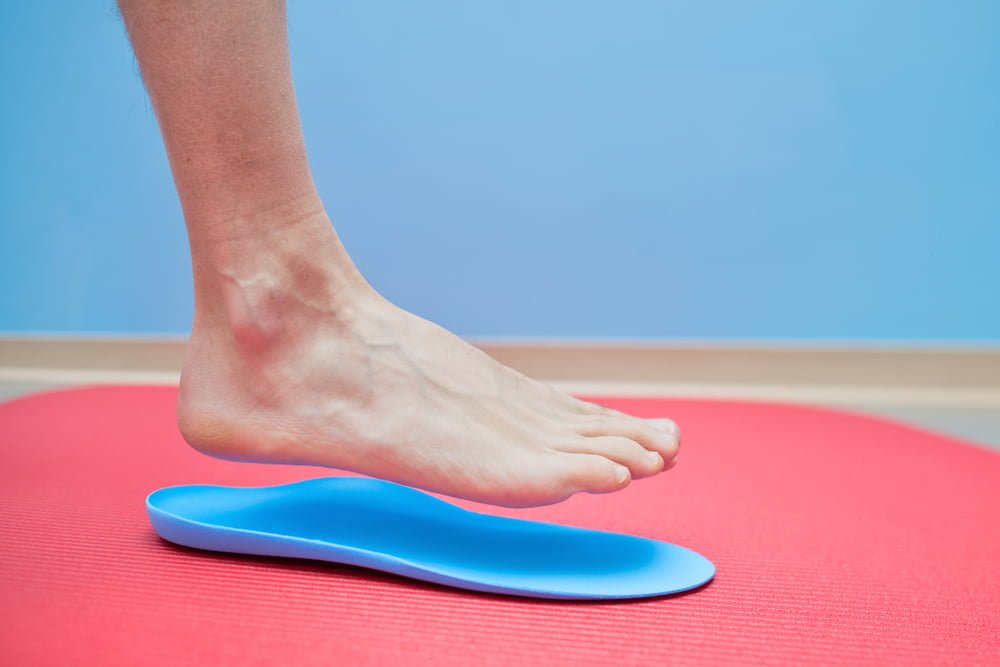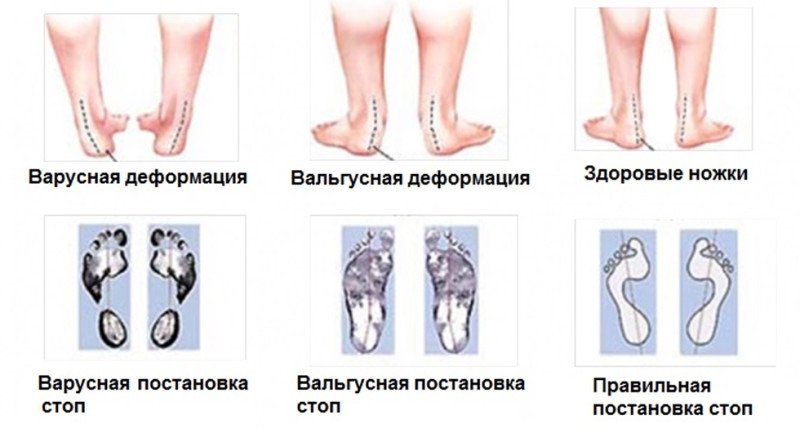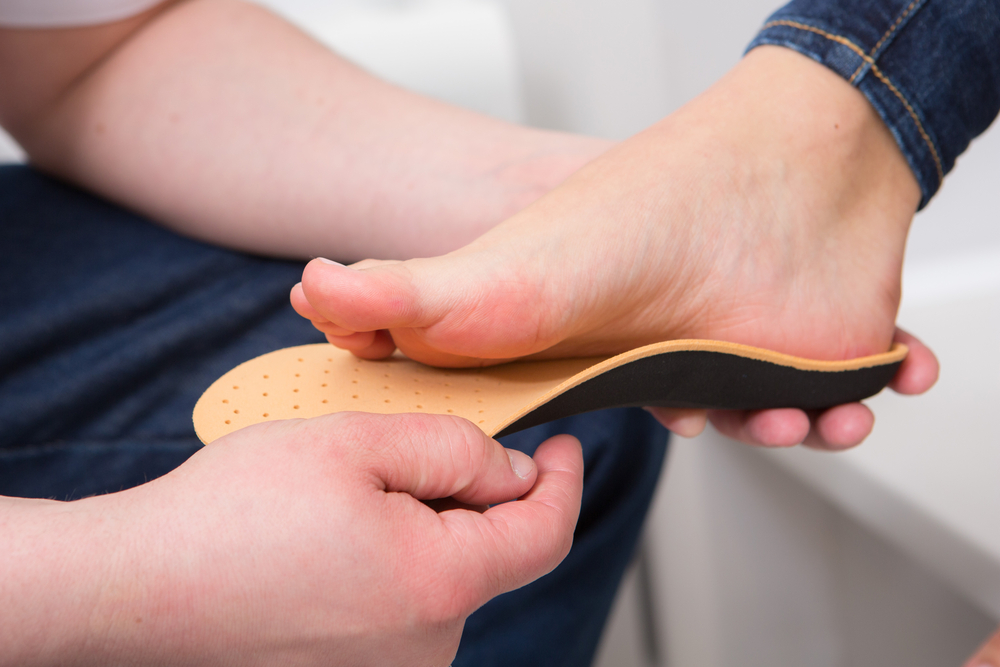In addition to circumstances related to lifestyle or certain events, the musculoskeletal system can also contract due to a specific disease, to detect which it is necessary to visit medical institutions for examination, testing and treatment.

- foot deformities
- Health risks of foot pathology
- Causes of Bunions (Valgus Deformity)
- How is a bunion treated?
- Measures to prevent injuries and overuse
- ankle
- Costs of treating valgus toe deformities
- symptoms of the disease
- species
- symptoms
- How can you tell if you have flat feet?
- How do you treat flat feet?
- How to prevent cramps
- Magvit is an excellent remedy for cramps
- side effects.
- Answers to frequently asked questions
foot deformities

How often we realize the meaning of familiar things only when we lose them! Take our feet, for example: how different life becomes when a bone or joint in them fails! The current most effective treatment for various types of foot deformities is a bone plastic procedure called arthrodesis (or arthrolysis) of the subtalar joint of the foot. This is the latest technology in orthopedics, which is already actively used by the family clinic's surgeons in the treatment of adult patients and children.
Health risks of foot pathology
All foot deformities can be hereditary or develop in early childhood, for example when a child is put on his feet too early. Because everything in our body is connected, abnormalities in the feet can also lead to problems in other parts of the musculoskeletal system: knees, hips and back. It is often difficult to find the right footwear, the gait and posture change, the legs tire more quickly, so activity has to be restricted. These problems get worse over time, which is why it is so important to correct them in a timely manner.
Arthroeresis – is a newer technology that replaces operations that are traumatic and stressful for the patient. It involves inserting a special implant into the subtalar sinus, a natural anatomical formation formed by depressions in the talus and heel bone of the foot. The size of the subtalar sinus typically varies depending on the orientation of the foot, but due to the numerous ligaments and tension of the posterior tibial tendon, it is always inclined. When the foot is deformed, the sinus becomes smaller and may even close completely, affecting the mobility and anatomy of the foot.
An implant placed in the sinus prevents it from closing, thereby reducing excessive mobility of the talus and restoring the axis of the ankle joint. This eliminates the internal arch of the foot, corrects the arch and restores natural stability.
Causes of Bunions (Valgus Deformity)
One of the causes of bunions on the inside of the foot is weakening of the ligaments. Women are most commonly affected when they wear uncomfortable shoes such as high heels, pointed or narrow toes, etc. Obesity, hereditary factors and lack of timely treatment and prevention are also cited as causes of bone formation in the feet.
The first symptoms are pain when walking and a slight visual deformation of the foot. In this case, too, an orthopedist/traumatologist should be consulted immediately in order to treat the problem at an early stage.
Symptoms include:
- Pain in the foot and toes, rapid fatigue;
- Thickenings, growths, lumps and other formations on the inside of the foot;
- swollen, reddened growths;
- a large number of calluses – calloused skin, corns;
- Significant visual changes to the foot.
How is a bunion treated?
First, the orthopedist/traumatologist must conduct an examination and determine the 'extent of damage' in order to select a specific type of treatment, which includes the following
conservative – can be effective in the initial stages. It consists of exercises with special rollers that are placed under the foot. In addition, the patient must wear shoes with orthopedic insoles. The doctor may also recommend other options for correcting the position of the big toe (splints or silicone spacers), treatments to facilitate this change (baths, massages, physical exercises to strengthen the foot) or changes in the patient's habits (e.g. wearing only well sitting shoes, orthopedic shoes and avoiding models with narrow toes).
surgical – is used for more severe deformities of the big toe. There are more than 300 surgical treatments available, but even these can be divided into three groups: soft tissue surgery, osteoarticular surgery, and combined surgery. Each individual case of trivial bone needs to be carefully examined and analyzed, especially in situations where conservative treatment is no longer effective. In the case of a surgical intervention, the orthopedist/traumatologist must individually select the method suitable for the patient.
What is taken into account when choosing a treatment method?
Factors influencing the choice of treatment method include
- what type of foot the patient has;
- whether the patient suffers from osteoarthritis of the big toe joint;
- how the first metatarsal bone is positioned;
- whether the forefoot is deformed
- whether the patient has a 'soft' foot;
- General information about the patient – gender, age, weight, occupation, symmetry of the deformity, comorbidities, etc.
Measures to prevent injuries and overuse
To avoid negative effects and injuries to the knee, you should consider the following tips:
- Train to the maximum. When choosing your route, take into account your physical parameters and abilities, your state of health and your fitness. Choose the season, location, difficulty level and backpack weight according to your personal abilities. When choosing a trekking program, find out about the route, duration and elevation changes. The weight of your backpack should not exceed 30 % of your body weight.
- Additional support. Use trekking poles when hiking in mountainous terrain. They relieve the strain on the knees and provide additional support on dangerous passages and water crossings.
- orthoses. Even if you don't have any knee problems or illnesses, knee supports can be very useful in the mountains. They support the knee joints and reduce the risk of injuries and strain. The best option is a sports bandage with adjustable elastic bands. It is not necessary to wear knee pads all the time as your legs will quickly get used to them and become looser. However, you should always wear knee pads before an upcoming descent or if you have knee pain. The bandage can be replaced with a simple elastic bandage.
- warm up. Remember to warm up beforehand, just as you would if you were exercising. You should warm up your muscles before the hike and after a long break and prepare them for the work ahead. You should not only warm up your knee joints, but also your ankles, hips and lower back.
ankle
Ankle pain is the second most common complaint among hikers. Walking on uneven and unfamiliar terrain, on mud, stones and snow requires constant work of the stabilizing muscles. Any injury to the ankle joint impairs the stability of the hip and knee and affects the function of the entire musculoskeletal system.
Injuries to the ankle joint may include
- Mechanically – Torn ligaments, fractures resulting from causes beyond the user’s control;
- Rolling of the foot. – Torn ligaments, fractures caused by careless actions and movements of the hiker;
- Atraumatic injuriesAtraumatic injuries – any chronic inflammatory degenerative process (e.g. arthritis).
To prevent ankle injuries, we recommend the following measures, among others. Principle.:
- 'Special' footwear. For trekking, we recommend hiking boots with a high ankle cuff. These protect the foot and minimize the risk of sprains. These shoes should not be worn constantly. At camp, it's a good idea to switch from heavy boots to light sneakers or flip-flops.
- suspenders. Bring a bandage with elastic bands in case you injure your ankle. Make sure it fits your hiking shoes in advance. Only wear them if you have pain or an injury.
- Protection from cold and wet. Ligaments are more delicate and easier to injure if they are too cold. So keep your feet warm and dry. Choose trekking shoes with a membrane and insulation.
- Proper lacing. Do not tighten the laces too tightly; the shoe should not pinch and hinder normal blood flow.
- warm up. Before you go, do a warm-up together every time.
Costs of treating valgus toe deformities
The prices stated in the price list may differ from the actual prices. Please call +7 495 781 5576 (24 hours) or visit GMS Hospital at 45 Kalanchevskaya Street, Moscow.
| Surname | Price |
| Forefoot reconstruction for deformity | 212,940 rub. |
| Radiography/scanning of the toes – 1 projection | 3,346 rub. |
| X-ray/scanning of the toes – 2 projection | 7.766,- €. |
| Musculoskeletal graft of the foot | 184,620 rubles |
Dear customers! Each case is individual and the final cost of your treatment can only be determined after a personal visit to a doctor at GMS Hospital.
The prices given refer to the most common services. You can choose private health insurance, pay per visit, take out an annual contract or pay a deposit and receive the services at a discounted price. On weekends and public holidays, the clinic reserves the right to charge additional fees in accordance with the applicable price list. The services are provided on the basis of a signed contract.
MasterCard, VISA, Maestro and MIR cards are accepted.


symptoms of the disease
People with valgus deformity may experience the following symptoms:
- Discomfort when wearing shoes
- cosmetic defect;
- pain at the site of overgrowth;
- Inflammatory process in the joint – redness, increase in local temperature, swelling, thickening of the skin;
- displacement of the toe onto an adjacent toe;
- Gait disorder, restricted movement;
- corns, calluses on toes, feet;
- tendon strain;
- subluxation, joint dislocation;
- ingrown toenail.
species
There are the following forms of valgus deformity
- Congenital – the disorder develops prenatally, with a change in the position of the talus. This anomaly is called 'vertical ram' or 'tilt foot' and is quite difficult to correct;
- Acquired anomaly – it is the result of imperfect tendons and ligaments in children. It develops with the child's first independent steps (up to the age of 10-14 months).
Normally, the alignment of the feet should be strictly parallel and maintained with each step. The severity of the pathology is different and depends on the degree of deviation:
The larger the angle, the longer the therapy must last.
The consequences of this pathology can be flat feet, osteochondrosis, arthrosis, scoliosis and, in rare cases, shortened limbs.
symptoms
The foot has a supporting function. If there is insufficient muscle tone in the legs, deformation of the knee and pelvic joints as well as poor posture when walking and if left untreated can occur.
The symptoms of the disorder appear when the child takes his first independent steps:
The gait becomes unsteady, clumsy, wobbly, pain and fatigue appear. The soles of the feet wear irregularly, especially on the inside. With normal development, the clumsiness and insecurity disappear as adequate walking ability is acquired, otherwise the symptoms only worsen.

How can you tell if you have flat feet?
You need to see an orthopedist. In general, three degrees are distinguished:
- 1 – the deformity is barely noticeable, the patient has no particular changes. The only symptom may be rapid leg fatigue.
- 2 – The symptoms are more pronounced: the pain increases and moves to the ankle and lower leg area. During this time, the muscles in the foot lose mobility.
- Grade 3 – This stage can be seen with the naked eye. The patient has swelling in the legs, pain in the lower back, Headache.. It is difficult to walk in regular shoes without special insoles.
How do you treat flat feet?
Soviet doctors believed that flat feet could be treated with an insole: it was designed to guide the foot and then balance it. However, this has not been confirmed by a single study.

It is not possible to change the shape of the feet, but the symptoms can be relieved. For this reason your doctor will probably recommend wearing comfortable shoes that provide good support to the foot, using special insoles, taking painkillers and controlling your weight. If these measures do not help, you can contact a surgeon.
How to prevent cramps
Measures to eliminate and prevent cramps include.
– Avoiding bad habits (smoking, excessive consumption of alcohol, coffee and fortifying drinks)
– adequate daily fluid intake;
– physical exercise to improve blood circulation;
– Enriching the body with vitamins and trace elements (deficiency of certain compounds can be determined by tests);
– a warm bath or shower can prevent nighttime cramps.
For the treatment and prevention of spasms, you should purchase a complex containing magnesium as a therapeutic agent. Even if there is no deficiency of this mineral in the body, it acts as an anticonvulsant by reducing neuromuscular excitability.
Magvit is an excellent remedy for cramps
One of the most affordable, safe and effective medicines for the treatment of convulsions – the drug. 'Magvitis manufactured by the Belarusian pharmaceutical company 'Minskinterkaps'.
It is the first medicine to be fully developed by domestic pharmacists and has a positive effect on the treatment of convulsions.
'Magvit' effectively combats both primary and secondary magnesium deficiencies, and pyridoxine (vitamin B6), a component of the drug, improves the absorption of magnesium into the blood and its assimilation at the cellular level.
The combined intake of vitamin citrate and magnesium is justified by the following clinically proven data:
– Magnesium and B6 enhance and complement the pharmacological effects;
– the vitamin helps to reduce the amount of magnesium excreted by the body and increases its content in red blood cells;
– the absorption and assimilation of magnesium are improved;
– Pridoxine is converted in the human liver to the active metabolite magnesium pyridoxal-5-phosphate.

Depending on the depth of the damage, heel fractures can be superficial or deep. The cracks may be dry.They can be dry cracks caused by various skin diseases and hyperkeratosis (thickening of the outer layer of skin), or moist, so called. maceration – is the process of cell shedding in tissue that occurs when the skin is exposed to moisture. Heel cracks that have not been treated by viruses or bacteria are not infected. Inflamed wounds are called infectedThese are serious reasons to see a doctor. In addition, the causes of cracked heels can be related to external factors or due to endogenous causes - pathological processes in the body that are caused by internal factors.
- Climatic influences Environmental influences (swollen lower limbs due to heat, sun and wind, chlorinated water, temperature fluctuations);
- Wearing incorrect or inferior footwear (airtight shoes). (poor insole, high-heeled shoes, open-heeled shoes – flip-flops, flip-flops, sandals)
- bad hygiene or, on the other hand, excessive foot care (use of alkaline soaps, frequent peelings that do not give the skin time to regenerate between treatments, or peelings that are carried out unprofessionally, cutting or otherwise removing rough skin on the heels)
- Hard physical workThe most common causes of physical exertion (standing and lifting weights) and other increased stress (excessive walking, running) include the following;
- SmokingSmoking, drinking alcoholic beverages.
A highly specialized doctor who deals with the diagnosis, prevention and treatment of foot problems and foot care is called a podiatrist. podiatrist.
A podiatrist performs pedicures and medical manicures as part of foot care.
Unfortunately, a professional, certified podiatrist is very rare today. In Russia, the term 'master chiropodist with in-depth knowledge' is more common. For this reason, it is not uncommon for a foot care specialist to refer to themselves as a podiatrist even though they are not actually one.
A foot care specialist with in-depth knowledge of podiatry often does not have sufficient knowledge of medicine, surgery and dermatology.

A professional podiatrist with in-depth knowledge and relevant experience can usually be found in clinics and cosmetic centers that have a medical license. In some cases, in addition to visual inspection of the cracks and skin of the feet, the podiatrist will also recommend a series of laboratory diagnostic procedures (e.g. microscopy and bacterial tests).
The podiatrist may also recommend additional specialist consultations, such as: B. with an endocrinologist, gastroenterologist, rheumatologist or dermatologist.
side effects.
The above information shows how serious diuretic tablets are and why they are needed. Of course these are prescription tablets. However, in our pharmacies the pharmacist often hears the request: 'Advise a diuretic'. To better understand the effects of diuretics, here are their most common side effects:
- Weakness;
- Cramps,
- impairment of consciousness;
- tachycardia, heart pain;
- thrombophlebitis;
- collapse, cardiac arrhythmia, decreased circulating blood volume;
- drowsiness, apathy;
- vision problems,
- constipation, jaundice;
- pancreatitis;
- urinary retention, blood in the urine;
- interstitial nephritis;
- reduced potency;
- Thrombosis.
And this is by no means a complete list of side effects. The water-salt balance is very easy to disrupt but difficult to restore. That is why these medications are only prescribed under strict medical supervision. During therapy, the concentrations of the most important salts and other indicators of the normal functioning of all systems and organs are measured. Sometimes Asparkam and Panangin are prescribed to replenish potassium and magnesium losses. Note that replenishing the lost minerals is problematic; Potassium and magnesium supplements only partially improve the situation.
Answers to frequently asked questions
- Why do athletes take diuretics? There are times when you need to lose weight before a performance, and the quickest way to achieve this is with furosemide. This flushes out water, but also useful minerals, which is why doctors do not recommend taking it. Athletes sometimes use banned drugs (doping). Furosemide is also used to quickly flush out stimulants.
- How do diuretics affect calcium metabolism? Strong diuretics excrete calcium, causing brittle bones and increasing the risk of fractures.
- Why should diuretics be taken during premenstrual syndrome? Diuretics should not be taken during PMS without a doctor's recommendation. A certain amount of water retention is physiological and disappears spontaneously. If the swelling is very uncomfortable, talk to your doctor. He or she may approve diuretic herbs or recommend testing.
- Why are diuretics necessary during pregnancy? As the fetus grows and the uterus enlarges, the ureters can become compressed, water is retained in the body, and swelling occurs. However, this is not the only cause. In severe toxemia, the water-salt balance is also disturbed. Your doctor will tell you how to manage the swelling. Certain types of diuretics are allowed under strict supervision. But you shouldn't try herbs on your own either, as they are also strong and can trigger allergies.

Many effective diuretics are of plant origin
Many plants are able to excrete water; They are particularly effective if the person affected has healthy kidneys. The choice of herbs should be discussed with the doctor, as they further stimulate the production of bile and hydrochloric acid in the stomach, can lead to constipation and other undesirable effects. Herbal medicine must be tailored to the individual needs of the patient. It is important to remember that herbs have similar salt excretion mechanisms, so when taken long-term they also reduce magnesium and potassium concentrations. Let's look at some examples:
Read more:- Transverse arch of the foot Latin.
- Acute pain in the calf muscle when running.
- Shoes for swollen feet.
- Why do feet hurt after running?.
- sphenoid.
- positioning of the feet.
- Feet of teenagers.
- Women's shoes for troubled feet.

